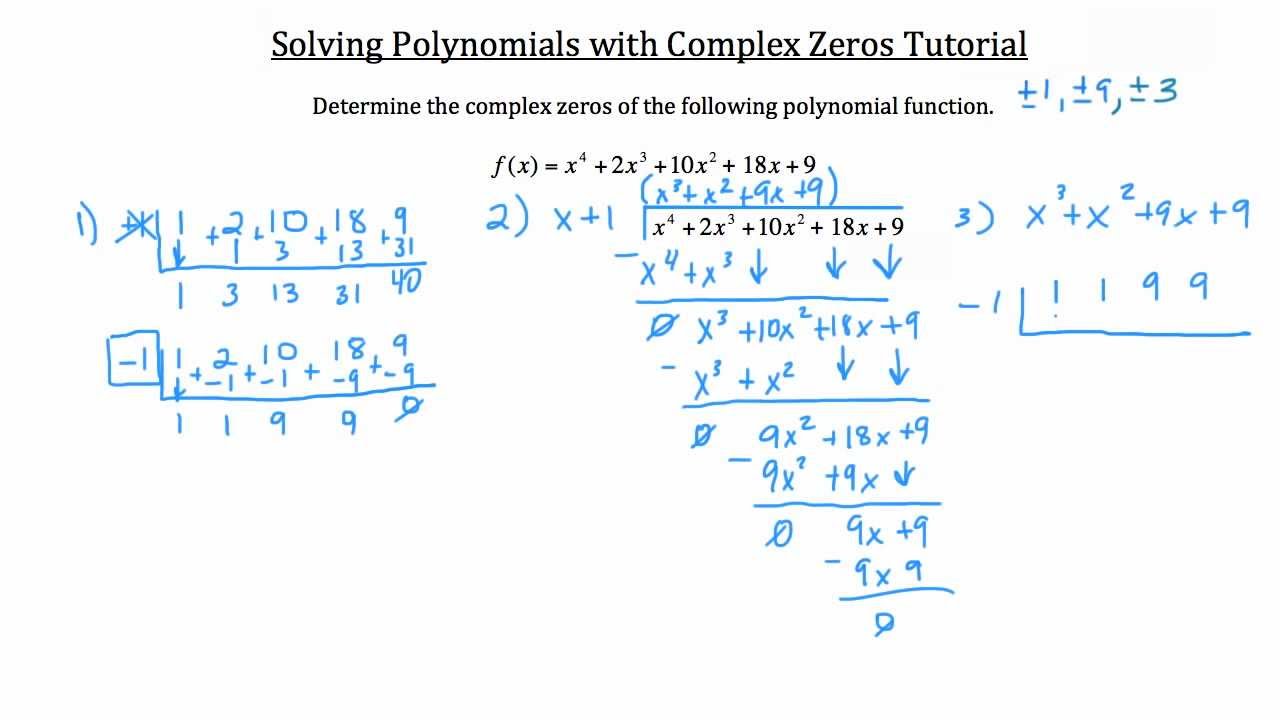
Real & Complex Numbers: Understanding Polynomials and Roots

In mathematics, numbers hold intrinsic value and utility, forming the foundation upon which various mathematical concepts are built. This article explores the essential roles of real and complex numbers, specifically focusing on polynomials and their roots. Understanding these concepts is crucial for any student or enthusiast of mathematics, as they not only contribute to advanced mathematical discussions but also serve practical applications in science, engineering, and technology.
Delving into polynomials, we encounter various operations and properties that reveal the interconnectedness of numbers. One of the key elements in this domain is the study of roots—the solutions to polynomial equations. This article aims to clarify what a root is, explore different types of roots, and examine their geometric and algebraic significance, thus enhancing our appreciation for the beauty and complexity of mathematics.
- What Are Real and Complex Numbers?
- The Importance of Polynomials in Mathematics
- Understanding Roots: Definitions and Types
- The Concept of nth Roots
- Exploring Square Roots, Cube Roots, and Beyond
- Odd and Even Roots of Negative Numbers
- The Nature of Complex Roots
- Roots of Unity and Their Geometric Interpretation
- The Relationship Between Polynomials and Their Roots
- Conclusion: The Relevance of Polynomial Roots in Mathematics
What Are Real and Complex Numbers?
Real numbers include all the numbers on the number line, comprising both rational and irrational numbers. They can be positive, negative, or zero, and can be expressed in decimal or fractional forms. Examples of real numbers include integers like -1, 0, and 5, as well as irrational numbers like √2 and π. On the other hand, complex numbers are an extension of real numbers and take the form a + bi, where 'a' is the real part, 'b' is the imaginary part, and 'i' represents the imaginary unit, satisfying the equation i² = -1.
Understanding real and complex numbers is fundamental to grasping the concepts of polynomials and their roots. The distinction between the two categories of numbers allows mathematicians to solve equations that may not have solutions within the realm of real numbers alone. This exploration enriches our mathematical knowledge, providing insights into various mathematical phenomena, including the behavior of polynomials.
The Importance of Polynomials in Mathematics
Polynomials are expressions consisting of variables and coefficients, typically arranged in a standard form. They are crucial in various mathematical disciplines, including algebra, calculus, and number theory, serving as building blocks for more complex structures. Formally, a polynomial can be defined as:
- P(x) = anxn + an-1xn-1 + ... + a1x + a0
where n is a non-negative integer, and ai are constants (coefficients). The degree of the polynomial is determined by the highest power of x in the expression.
The study of polynomials is significant not merely due to their theoretical implications but also their practical applications across numerous fields. For example, polynomials model natural phenomena in physics, optimize solutions in engineering, and solve complex problems in computer science. Moreover, analyzing the behavior of polynomials leads to valuable insights around their roots.
Understanding Roots: Definitions and Types
- Real Roots: These are roots that are numbers on the real number line.
- Complex Roots: These consist of pairs of real and imaginary numbers.
- Repeated Roots: A root is considered repeated if it satisfies the polynomial equation more than once.
- Rational Roots: Roots that can be expressed as a ratio of two integers.
Understanding the different types of roots is pivotal for solving polynomial equations, as it guides mathematicians in identifying how many solutions an equation may possess and the nature of these solutions.
The Concept of nth Roots
The concept of nth roots extends the idea of basic roots to include solutions for polynomials. The nth root of a number a is defined as a value x such that:
- xn = a
In this context, 'n' denotes the degree of the root. For instance, the square root (n = 2) and cube root (n = 3) are specific cases of nth roots. Recognizing this concept is crucial as it sets the stage for understanding polynomial roots in greater depth.
Exploring Square Roots, Cube Roots, and Beyond
Understanding basic roots, such as square roots and cube roots, is fundamental for grasping more complex mathematical ideas. The square root of a number 'a' is defined as the root 'x' that satisfies the equation:
- x2 = a
For example, the square root of 16 is 4, as 42 = 16. Similarly, the cube root of a number 'a' is determined as the value 'x' that satisfies:
- x3 = a
For instance, the cube root of 27 is 3, since 33 = 27. Additionally, we can explore roots beyond the cubed variety, such as the fourth roots, fifth roots, and higher dimensions, which are represented generally with the notation:
- nth Root: rootroot(a, n) = x where xn = a
This understanding of square and cube roots prepares learners to delve into complex mathematical scenarios where these basic roots play significant roles.
Odd and Even Roots of Negative Numbers
Determining roots of negative numbers introduces an intriguing aspect of mathematics. While even roots (such as square roots) of negative numbers are undefined within the real number system, odd roots (like cube roots) can be evaluated. The cube root of a negative number, for example, yields a negative result:
- ∛(-27) = -3, since (-3)3 = -27
This unique behavior highlights the versatility and complexity of roots, reminding us of the necessity of understanding both real and complex numbers in mathematical explorations.
The Nature of Complex Roots
In the realm of complex numbers, the discussion of roots becomes even more fascinating. Specifically, a polynomial of degree n will have n roots in the complex number system, according to the Fundamental Theorem of Algebra. This phenomenon occurs even in cases where there are no real roots present. Complex roots often appear in conjugate pairs:
- If r + si is a root, then r - si is also a root.
Understanding complex roots is vital for solving a wide range of polynomial equations. This article's aim is to familiarize readers with the nuances of such roots and their significance in the broader mathematical context.
Roots of Unity and Their Geometric Interpretation
Another important concept in the study of roots is that of roots of unity. These are complex numbers that satisfy the equation:
- zn = 1
The roots of unity can be visualized geometrically as points located on the unit circle in the complex plane. Each root can be expressed in exponential form:
- z = e2πik/n for k = 0, 1, ..., n-1
These roots not only have theoretical significance but also practical implications in fields such as signal processing, where they help in analyzing periodic functions. Understanding roots of unity enhances our grasp of both complex numbers and their polynomial relationships.
The Relationship Between Polynomials and Their Roots
The relationship between polynomials and their roots is one of the foundational aspects of algebra. The roots of a polynomial are deeply connected to its coefficients and can be determined through various means, including factoring, synthetic division, or utilizing the quadratic formula in the case of quadratic polynomials. Moreover, Vieta's formulas offer relationships between roots and coefficients for polynomials of any degree:
- For example, in a quadratic polynomial ax2 + bx + c, the sum and product of its roots can be related to the coefficients a, b, and c.
This intricate relationship reinforces the concept that understanding roots is essential not just for solving equations but also for comprehending the underlying structure of polynomials.
Conclusion: The Relevance of Polynomial Roots in Mathematics
The exploration of real and complex numbers, along with polynomials and their roots, reveals a rich tapestry of mathematical interconnections. From understanding what is a root to exploring various types such as nth roots, square roots, and complex roots, we gain profound insights that extend into various fields of study.
The study of roots is pivotal in mathematics, impacting not only theoretical aspects but also practical applications in science and technology. As we continue to unravel the complexities of polynomial equations and their roots, we illuminate the importance of these fundamental mathematical concepts in our ever-evolving understanding of the numerical landscape.
Did you find this article helpful? Real & Complex Numbers: Understanding Polynomials and Roots See more here Education.
Leave a Reply






Related posts